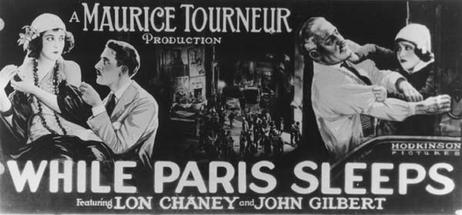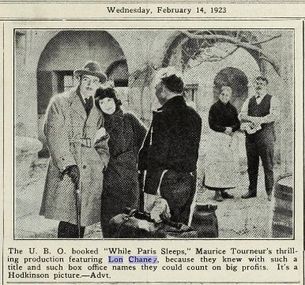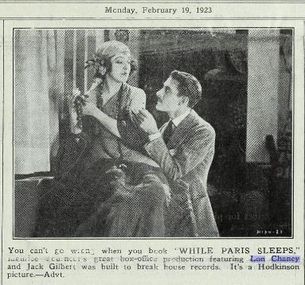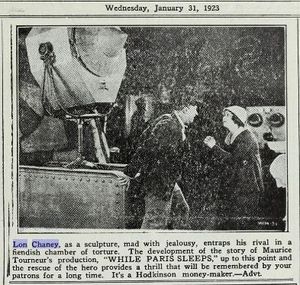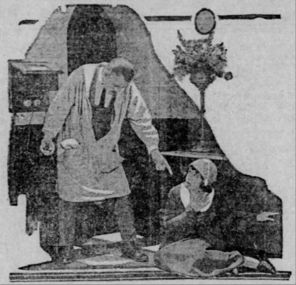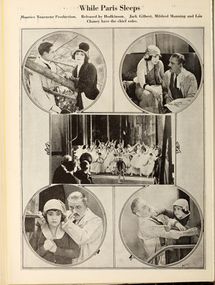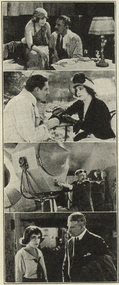While Paris Sleeps (lost Lon Chaney drama film; 1923)
While Paris Sleeps is an American silent drama film, released on January 21st, 1923. It was directed by Maurice Tourneur, and starred Lon Chaney and John Gilbert. It was originally titled The Glory of Love, the title of the novel the film was based on. Initially filmed in 1920, it went unreleased for about three years for unknown reasons, before finally getting released in early 1923.[1]
Plot
Henri Santados (Lon Chaney) plays an insane sculptor, working in his studio in Paris. He falls in love with his model Bebe Larvache (Mildred Manning), who later falls in love with an American Dennis O'Keefe (John Gilbert) while on tour in the city named. Henri and the owner of a wax museum known as "The Chamber of Horrors", Father Marionette (Jack F. McDonald) begin to conspire against O'Keefe in an attempt to get rid of him. Meanwhile, O'Keefe's father also convinces her to stop seeing his son.
Bebe requests to have one last night with him, and later on, as O'Keefe is arriving at the studio to pick her up, spots her and Santados apparently in an intimate position. In actuality, it was staged quickly by Santados to make it appear that way, and it leaves O'Keefe heartbroken. He is then taken hostage by Father Marionette, and tortured at his museum. During a call made by Marionette to Santados, Bebe hears his voice in pain. He is later rescued in time by a friend, and rushed to a hospital, where his father finally allows him to marry Bebe. [2]
Availability
The film, which ran for just under an hour, is now considered lost. The film was shown in theatres for a few years after release, with it's apparent final (archived) showing happening in Winona, Minnesota on July 10th, 1925[3]. The film, while notable upon release for its torture scene,[4] appears to have fell into obscurity afterwards, and eventually wound up becoming lost. It was occasionally mentioned in Newspapers reminiscing about the time period, [5] and to show what was happening locally in 1923[6], but it doesn't appear to have been shown anywhere beyond 1925. A later, though unrelated film, was released in 1932 using the same name.
No fragments of film survive, though multiple stills have been found from the film, including features from newspapers[7] and magazines.[8]
Gallery
Images
External Link
References
- ↑ Silentera.com listing on the film. Retrieved 30 Jul '21
- ↑ Synopsis from lonchaney.org Retrieved 30 Jul '21
- ↑ Newspaper clipping from a Winona Newspaper Retrieved 30 Jul '21
- ↑ Clipping for Honolulu Newspaper Retrieved 30 Jul '21
- ↑ Newspaper clipping from a Pottsville newspaper Retrieved 30 Jul '21
- ↑ Newspaper clipping from a Muncie Newspaper Retrieved 30 Jul '21
- ↑ Clipping from a Honolulu Newspaper Retrieved 30 Jul '21
- ↑ Page from an Exhibitors Trade Review Retrieved 30 Jul '21
